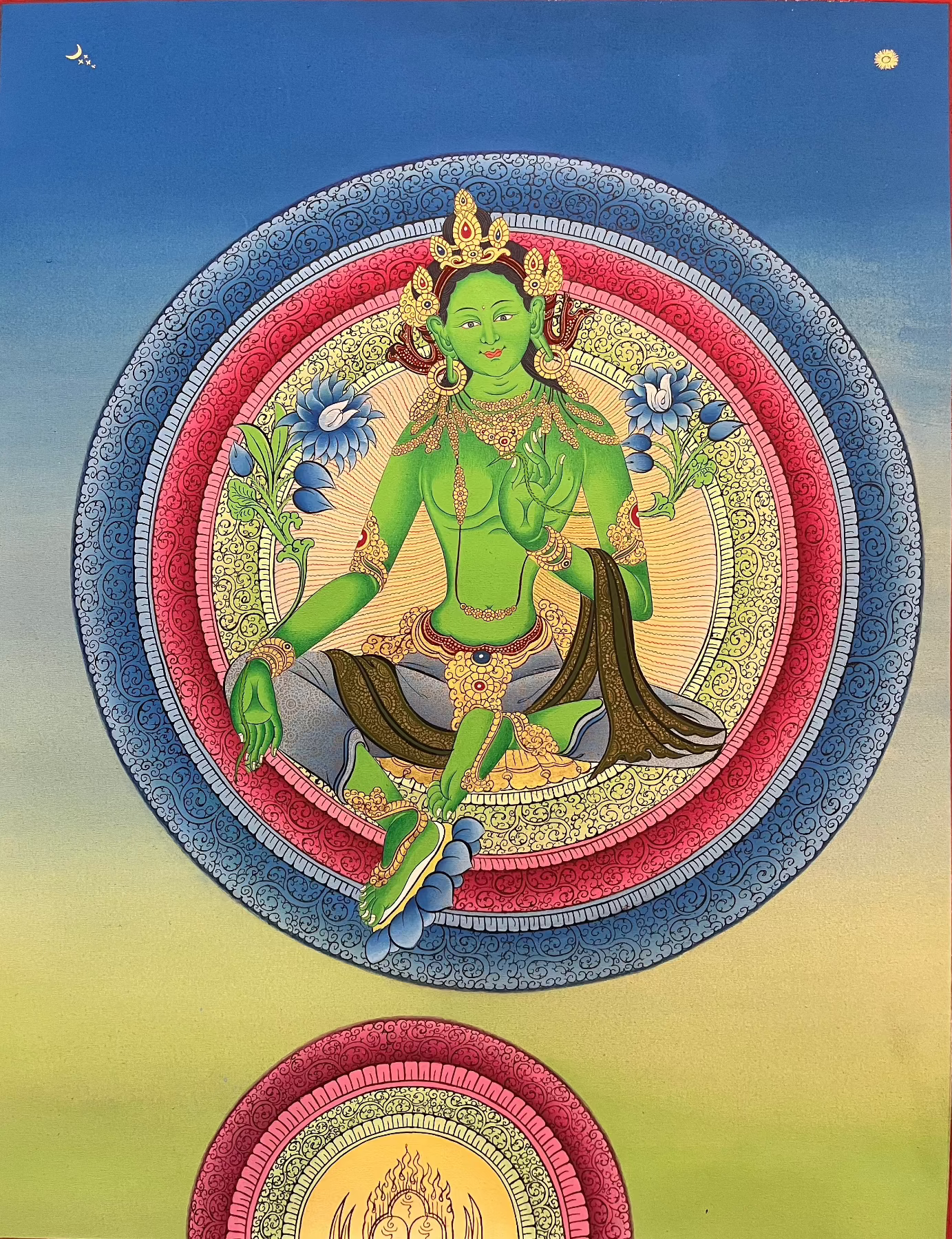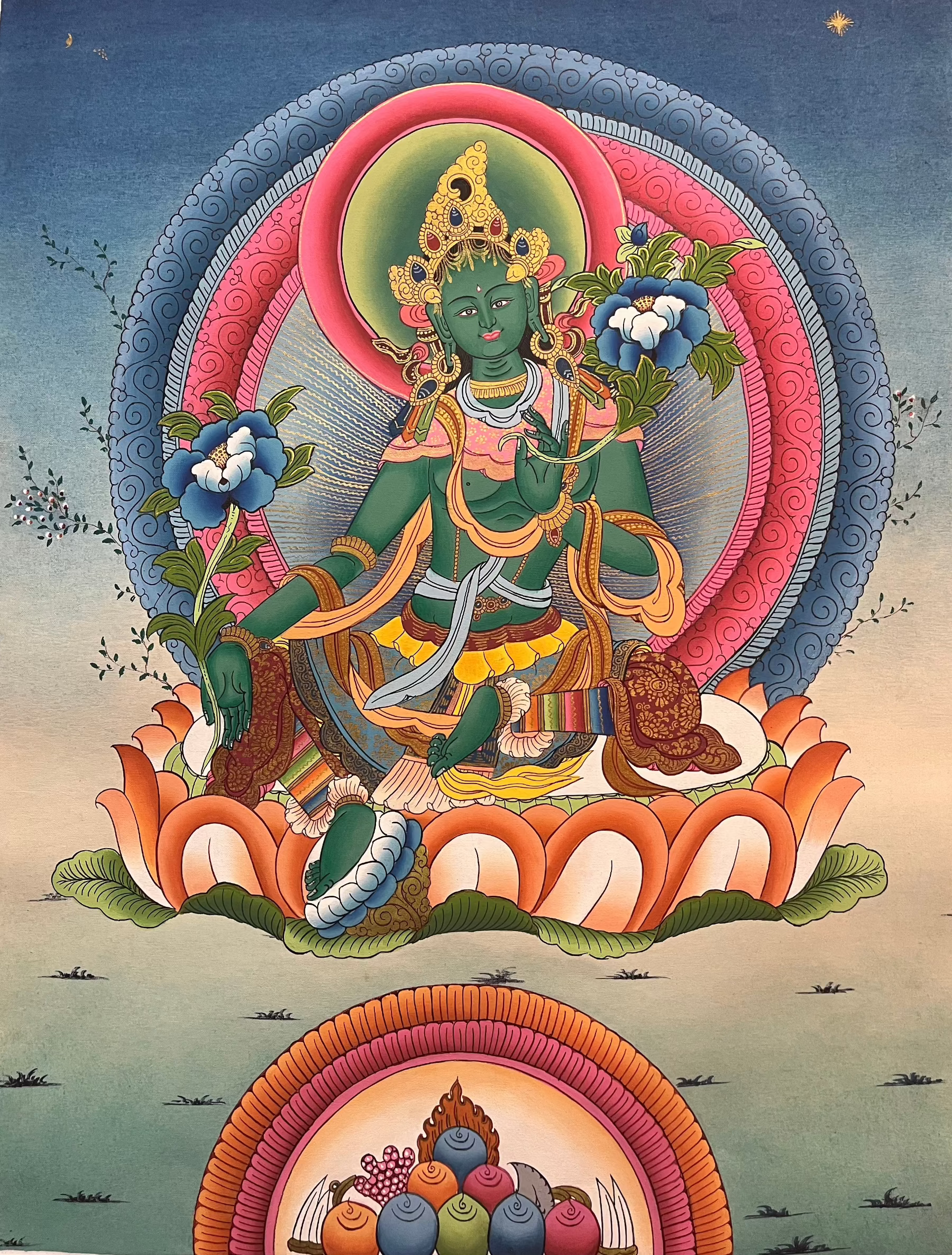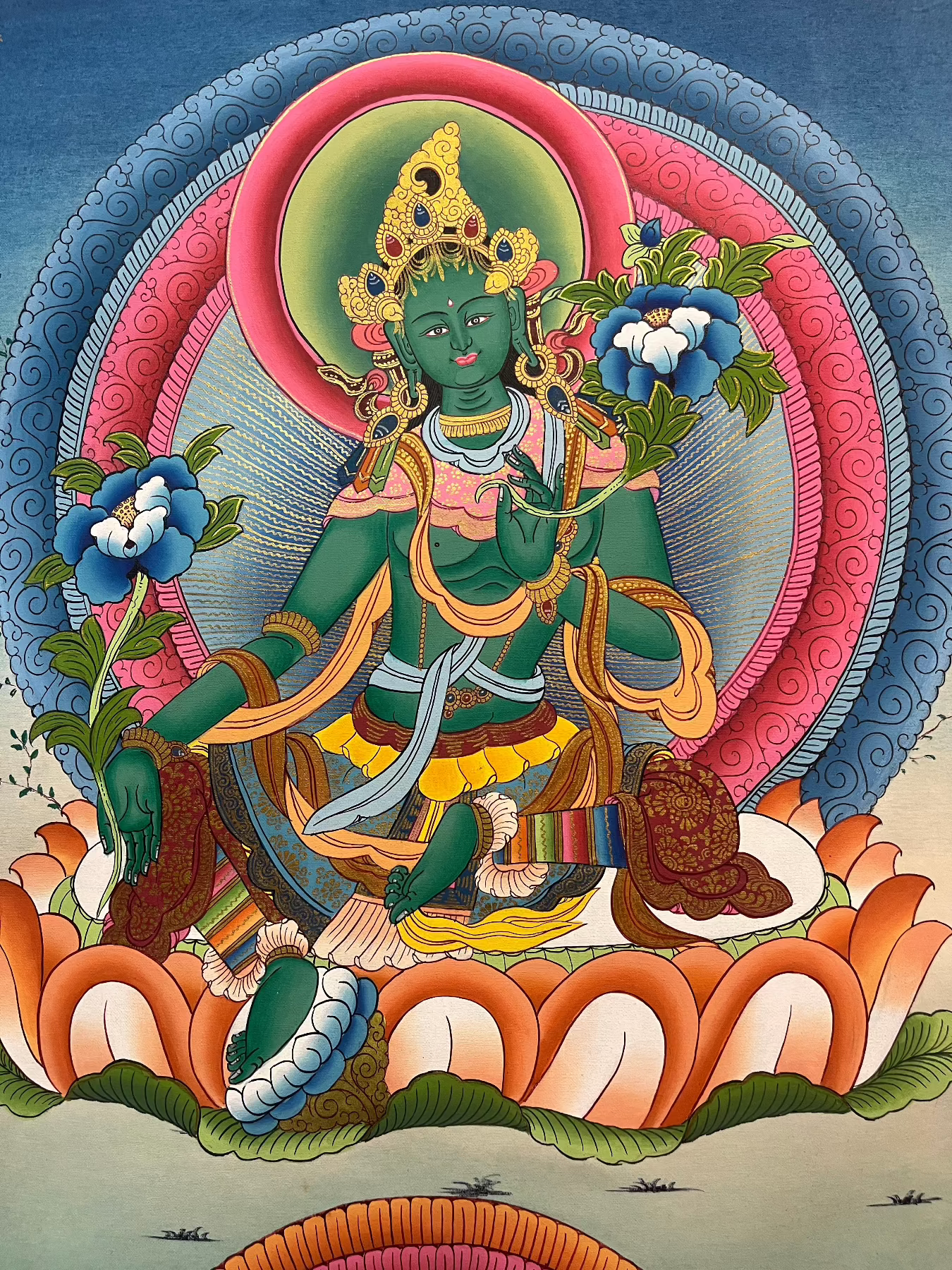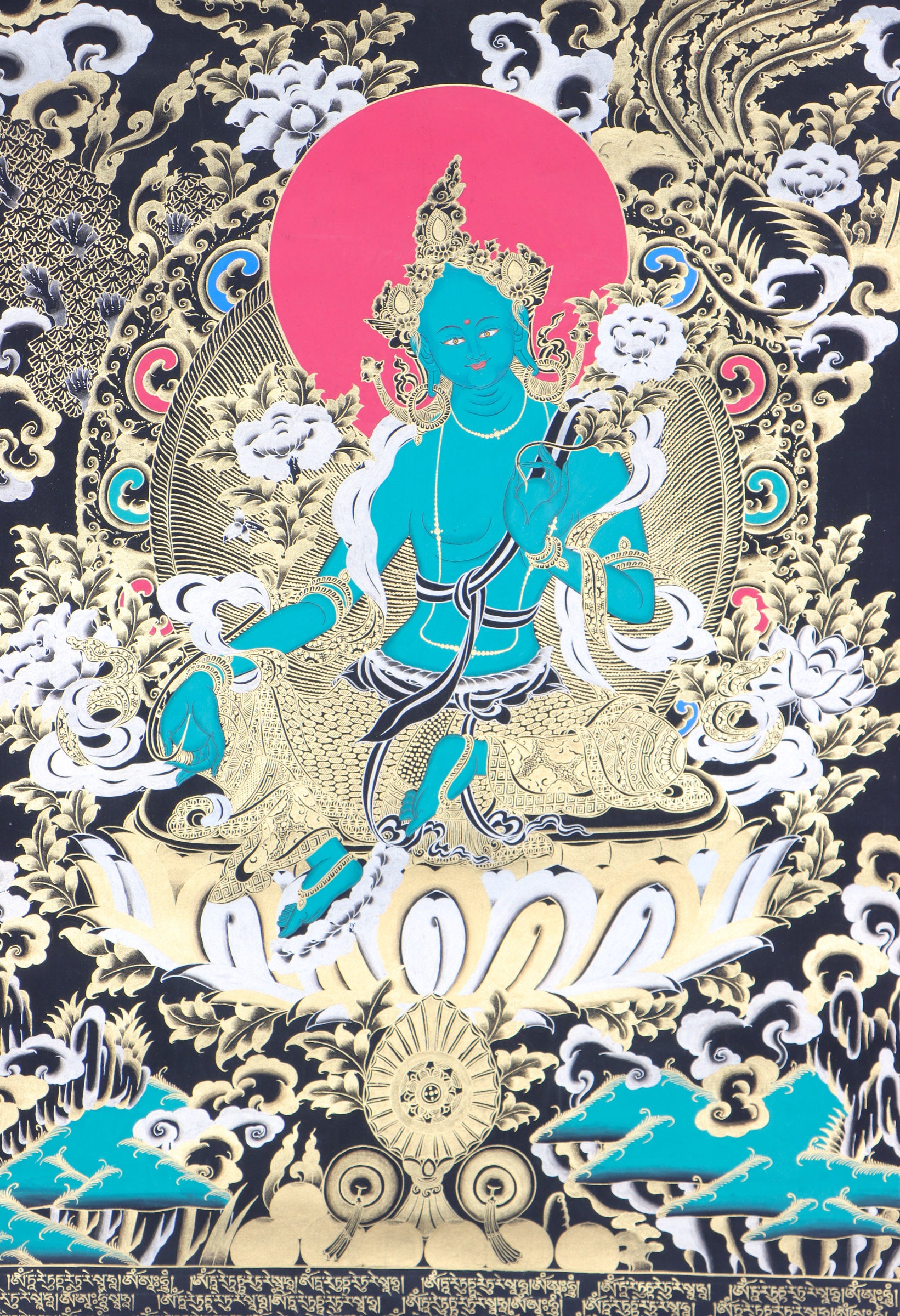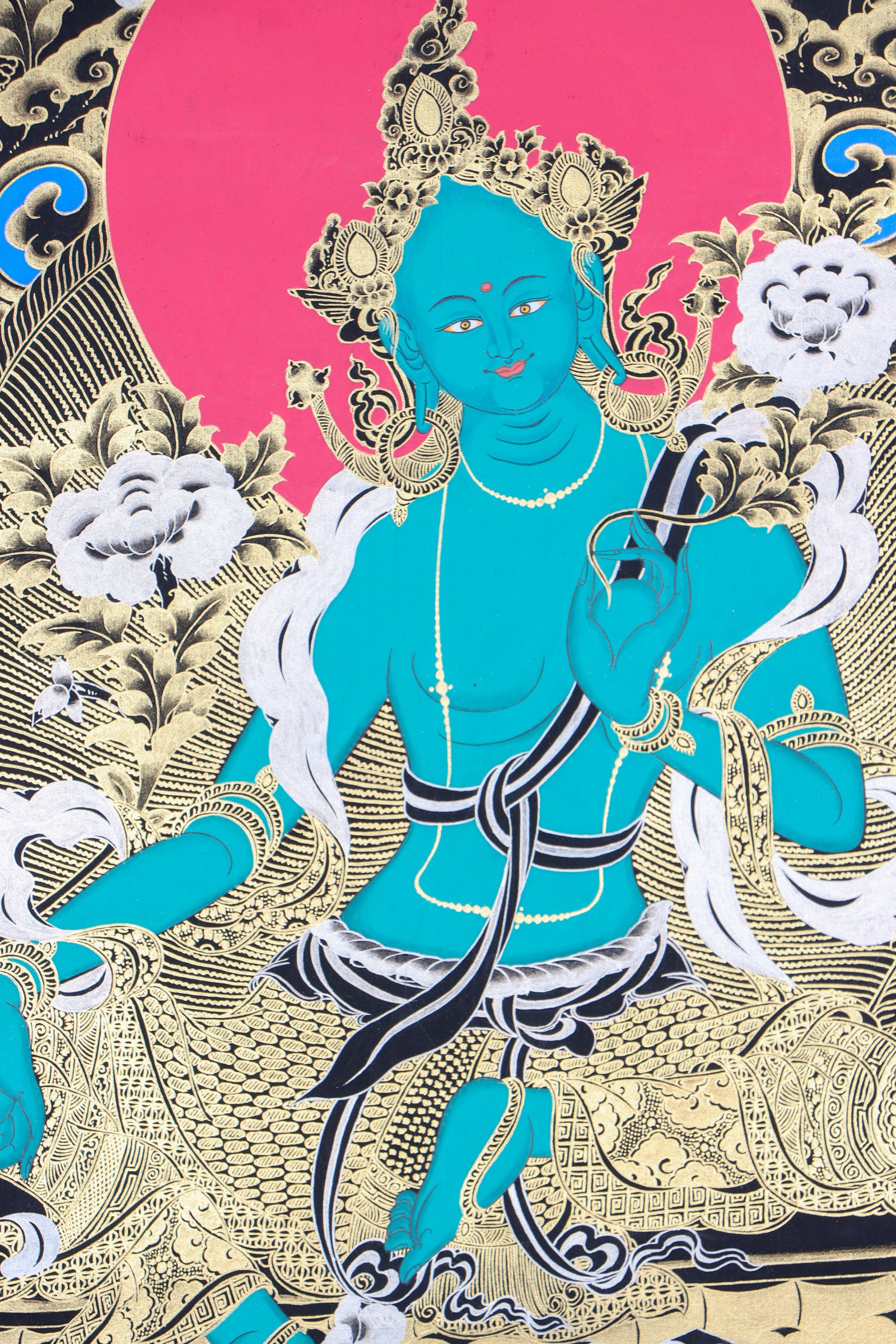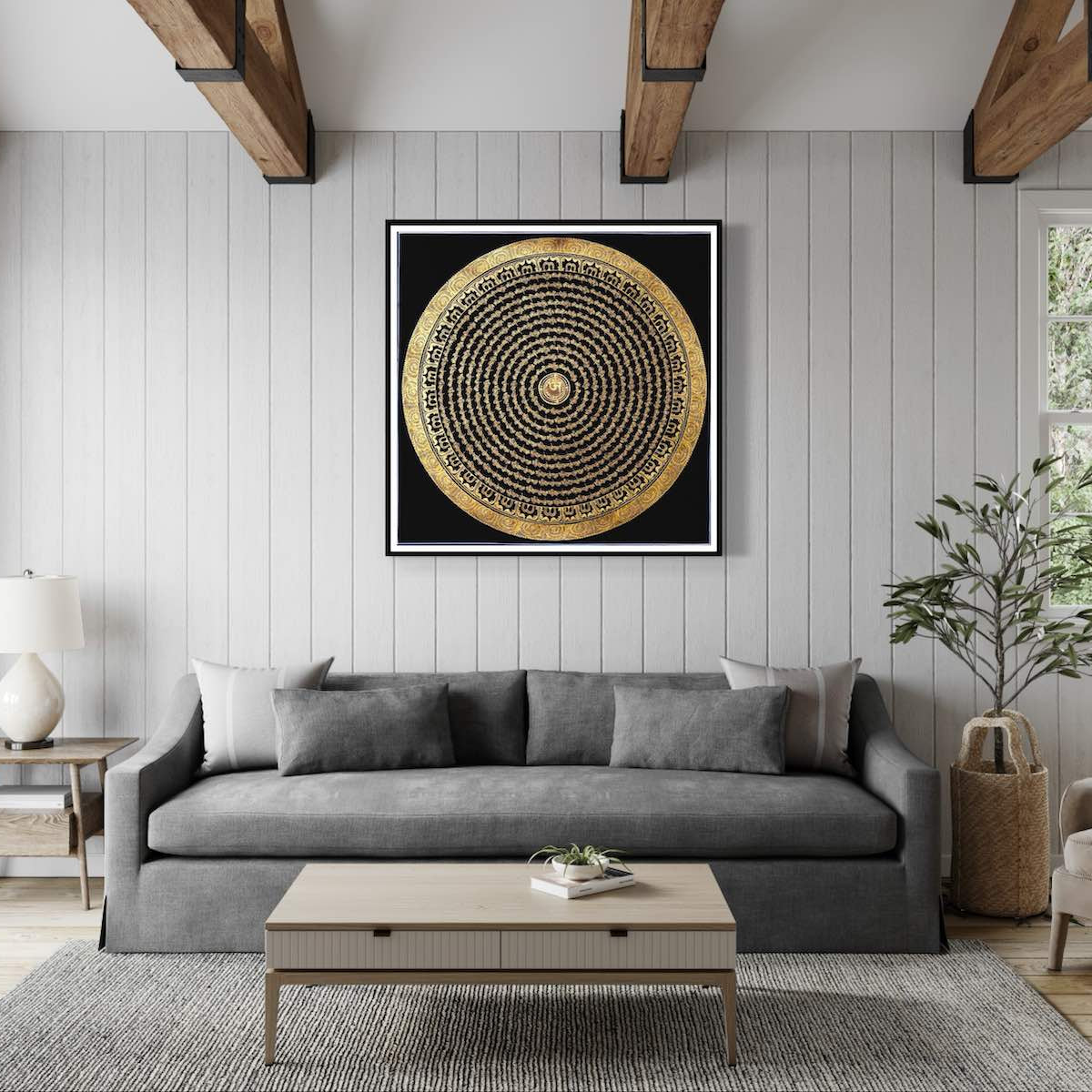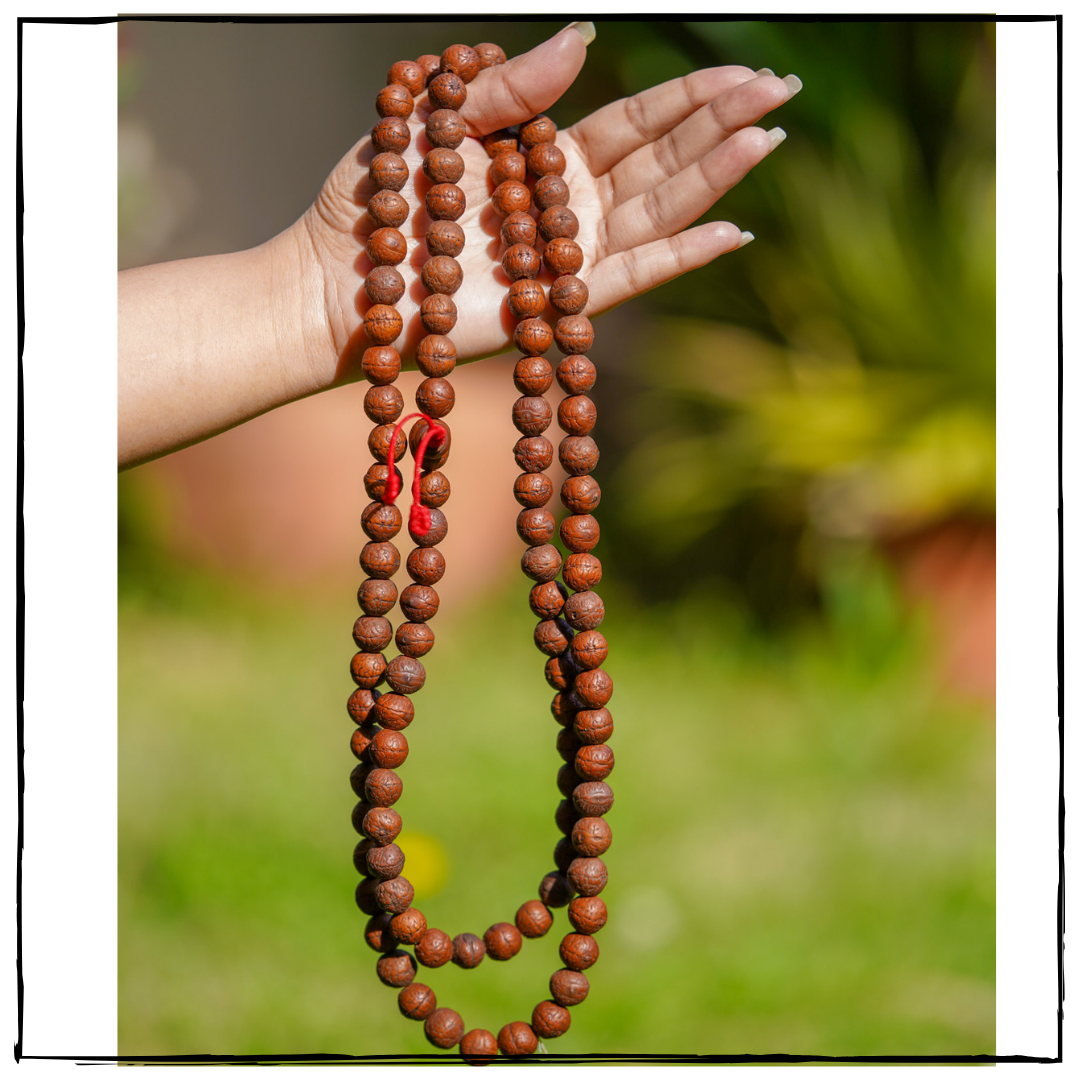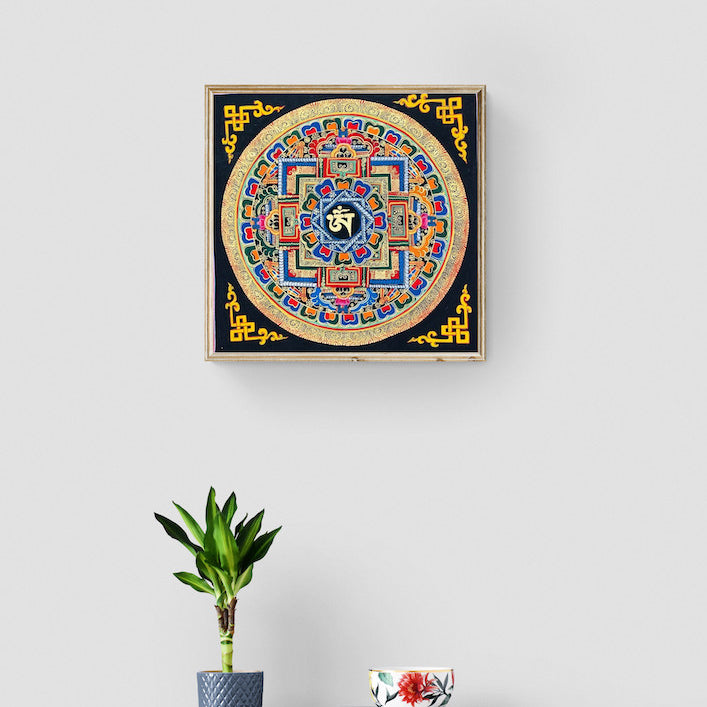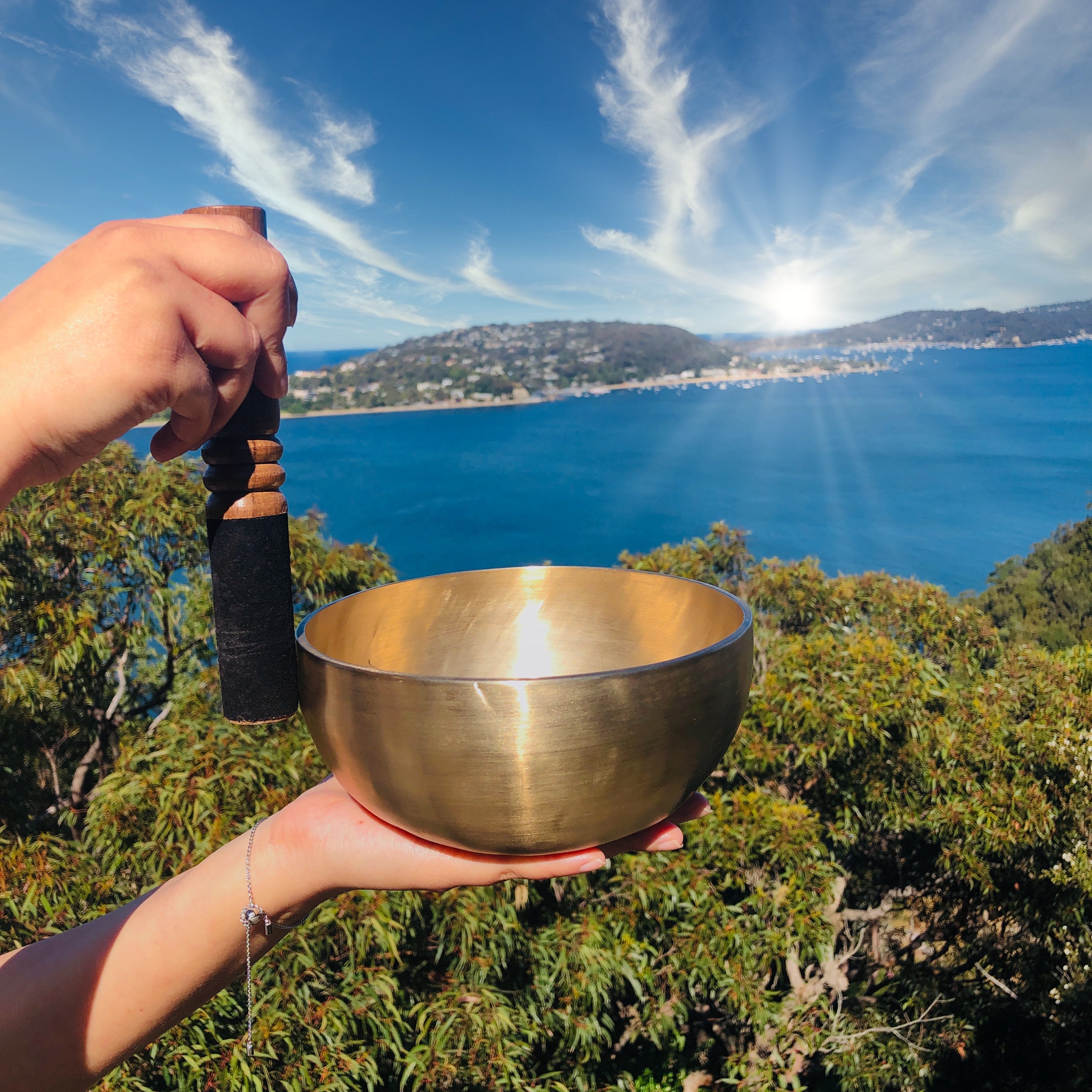Green Tara Thangka Painting
Couldn't load pickup availability
Description
A traditional Tibetan Buddhist artwork, Green Tara Thangka Painting portrays the venerated figure of Green Tara whose compassionate and protective traits are held in high esteem in Tibetan Buddhism. Highly intricate, these paintings are often utilized for meditation, devotional purposes and as an aid in Buddhist teachings.
Green Tara is gracefully seated atop a lotus throne in the painting, with her body imbued in a shade of green, depicting her qualities of prompt compassion. This lotus throne, popular in Buddhist art, symbolizes enlightenment and purity. Furthermore, Green Tara is depicted making two specific hand gestures, which symbolize protection and fearlessness, as well as cradling a lotus flower that stands for purity.
Green Tara is renowned for her capacity to give compassionate support in times of difficulty and her ability to aid practitioners in surpassing hindrances. This Thangka painting can act as a visual tool for contemplation and a point for veneration, calling to mind Green Tara's benevolence and direction. The painting serves as a reminder that we can summon Green Tara for aid in tackling obstacles and accomplishing ambitions. It can be a source of motivation and stimulation, embodying Green Tara's longings for peace, longevity, and affluence.
Product Specification:
- Hand Painted
- Materials: Semi-Precious Natural Minerals
- Base: Cotton Canvas
- Origination: Nepal

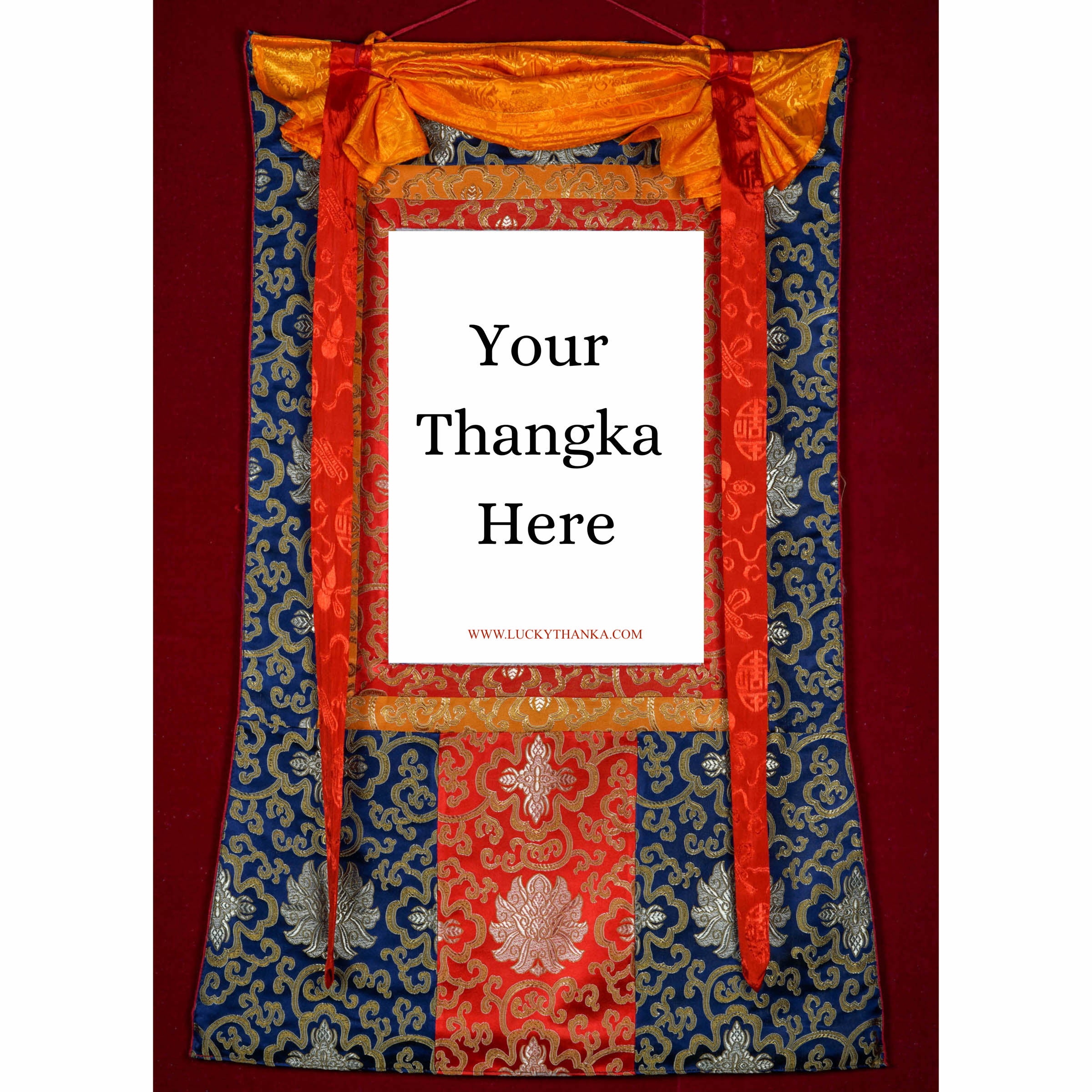
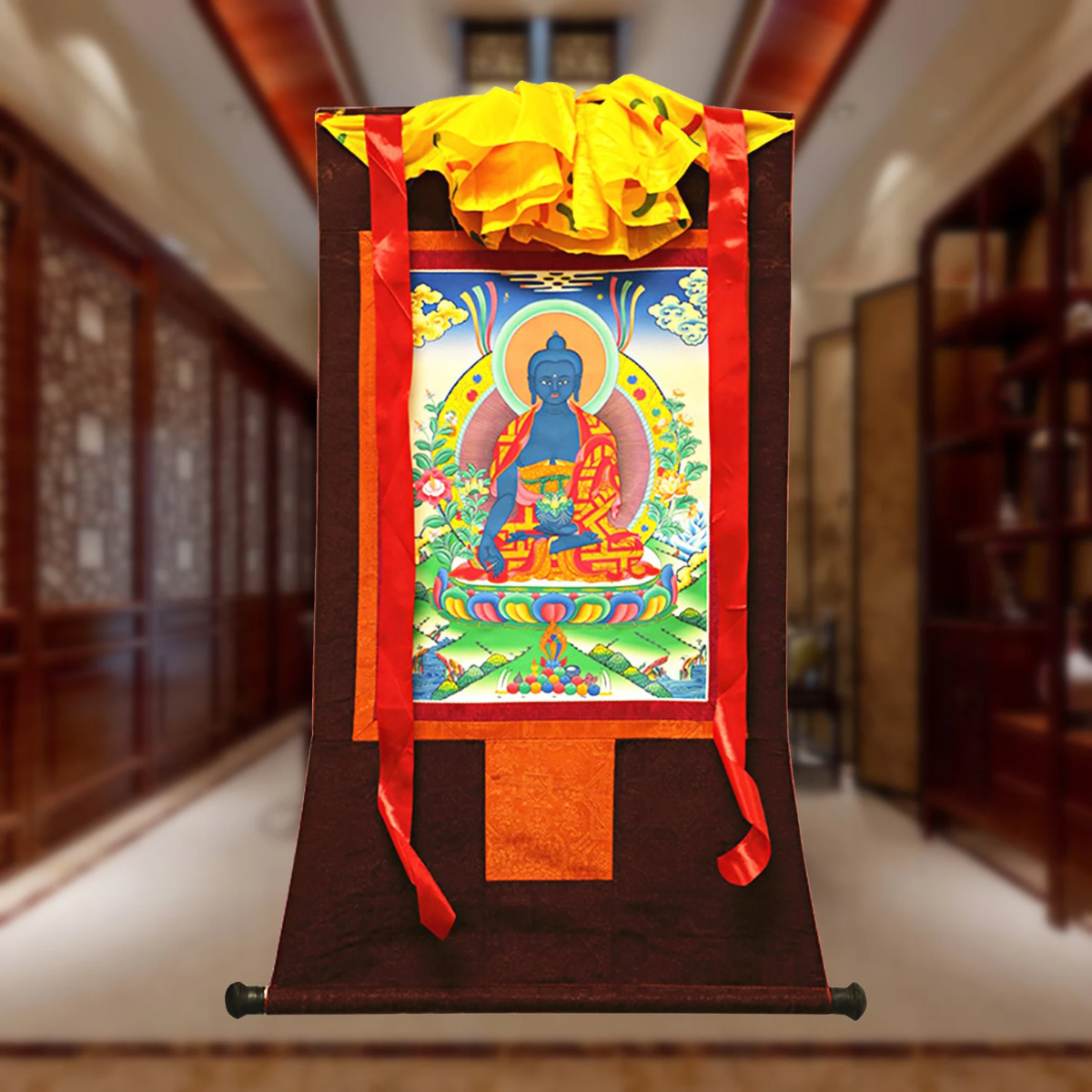
Hand Embroidery Brocade
Want to add a Brocade to your beautiful Thangka Painting? Traditional Style Brocade has been one of the most popular form of mounting as it has a greater religious merit.
Note: Make sure you have added the Thangka to your cart first.
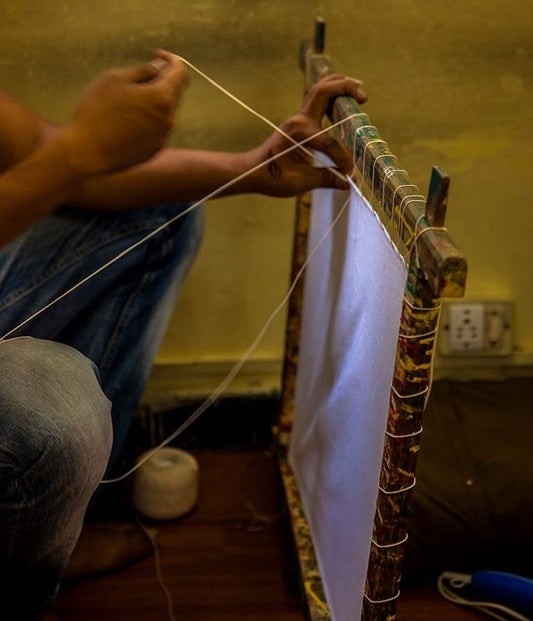
100% Cotton Canvas
Preparing the Cotton canvas before starting to paint a Thangka. This process includes washing, drying, stretching, sizing and everything needed to make a perfect base for the thangka to last for centuries.
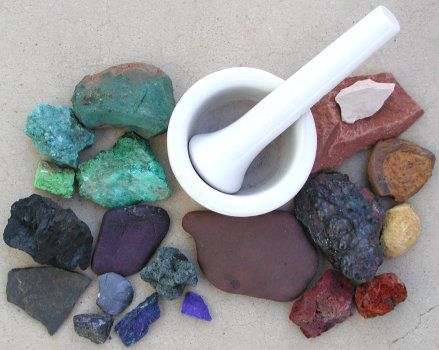
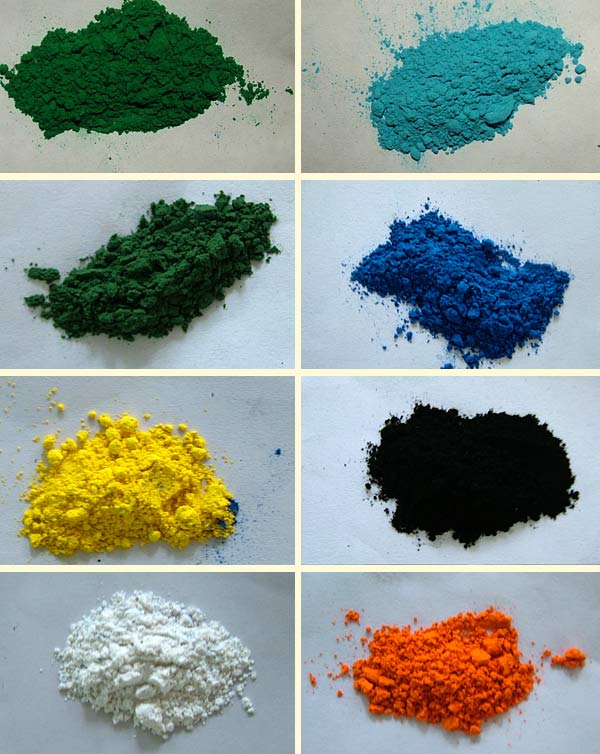
Natural Minerals
Thangka Paintings are painted using the natural minerals. These are firstly grind into the powder form and then used in the thangka as a paint.
















